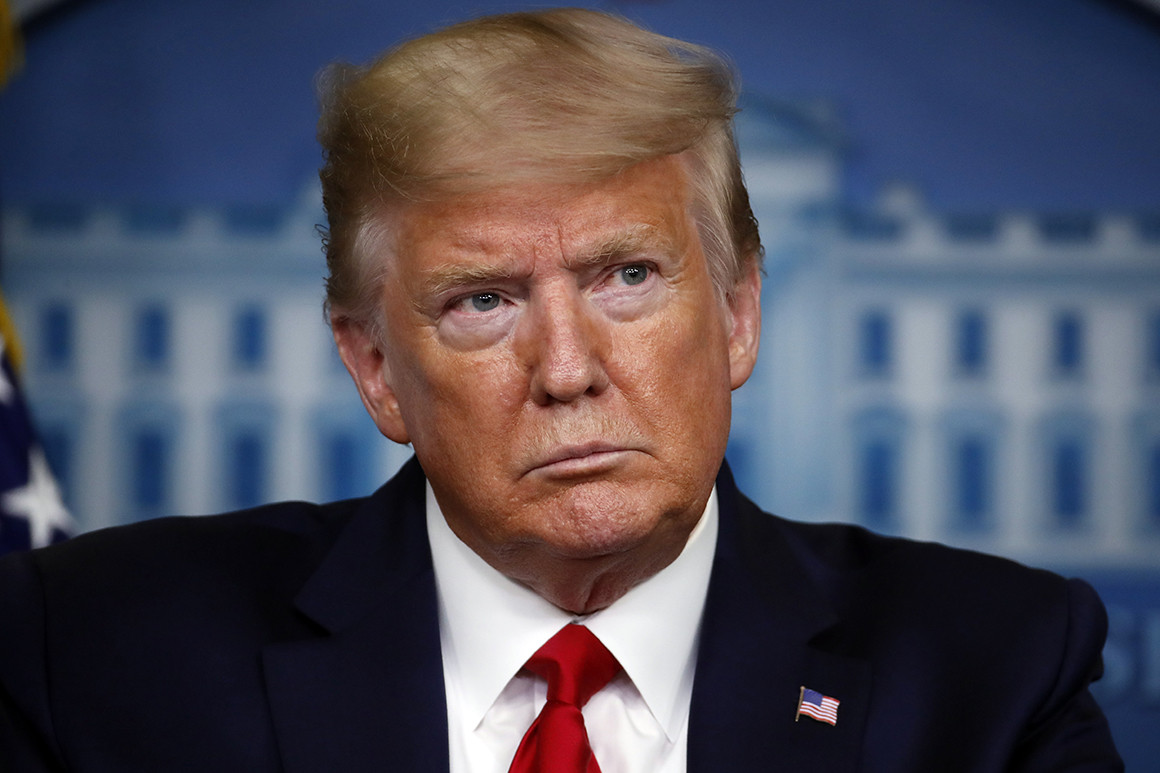News
French President Macron slapped during trip to south, two people arrested
- JD Vance breaks polling records in the worst way - July 25, 2024
- Donald Trump’s Losing Election Poll for First Time in Over a Month - July 25, 2024
- FBI Is Not Fully Convinced Trump Was Struck by a Bullet - July 25, 2024
News
JD Vance breaks polling records in the worst way

.,..Has a net-negative approval rating following the Republican National Convention, CNN found.
Vice-presidential nominees typically receive a ratings bump after their party’s convention, but Sen. JD Vance is bucking the tradition.
On the heels of last week’s Republican National Convention, the Ohio senator is the least-liked vice-presidential candidate since 1980, CNN found in a polling analysis. It noted the data applied to nonincumbents.
Since 2000, vice-presidential nominees typically have had a net-positive rating immediately following the convention, at plus 19 points. Vance, however, is polling at minus 6 points just one week after accepting the vice-presidential nomination and officially embarking on the campaign trail , the network found.
The freshman lawmaker’s lower-than-normal approval ratings are not an anomaly, as Vance has long polled behind other Republicans.
Vance heavily underperformed in his 2022 Ohio Senate race, at least compared with how other Republicans performed in the state that year. Vance defeated his opponent, then-Democratic Rep. Tim Ryan, by only 6 percentage points. In comparison, Republican Gov. Mike DeWine crushed his Democratic opponent, former Dayton Mayor Nan Whaley, by 25 percentage points in that same cycle.
“The JD Vance pick makes no sense from a statistical polling perspective,” Harry Enten, a CNN political-data reporter, said.
Vice President Kamala Harris’ team sent out a press release gloating about the numbers.
“We’d like to be the first to congratulate JD Vance on making history as the least popular VP pick, well…ever,” it said.
The press release went on to list some of Vance’s policies, with the first one being his previous support for a nationwide abortion ban.
The Atlantic’s Tim Alberta tweeted Monday that e ver since President Joe Biden ended his reelection campaign and endorsed Harris to become the Democratic presidential nominee, some members of Trumpworld have questioned whether Vance remains a wise running mate . President Donald Trump faltered with suburban voters in 2020, and Vance’s selection was widely seen as an appeal to base voters instead of one geared toward attracting more swing voters.
Trump’s campaign spent months perfecting its attacks against Biden and has now had to shift its messaging, as Harris poses a different electoral threat from her predecessor. While Biden was struggling to rally young voters and minority voters around his reelection campaign, Harris is more popular with those groups and presents a major upside for Democrats, as they need a high Gen Z and millennial turnout to remain competitive in the key battleground states .
There’s also evidence that Republicans will closely monitor polling over the next two weeks beyond Vance’s low likability ratings, as a Trump pollster said Harris could get a numbers bump following her expected ascent to the top of the Democratic ticket.
- JD Vance breaks polling records in the worst way - July 25, 2024
- Donald Trump’s Losing Election Poll for First Time in Over a Month - July 25, 2024
- FBI Is Not Fully Convinced Trump Was Struck by a Bullet - July 25, 2024
News
Donald Trump’s Losing Election Poll for First Time in Over a Month

Former President Donald Trump is losing a Reuters/Ipsos poll for the first time since May as Vice President Kamala Harris gains ground.
Harris has become the Democratic frontrunner after President Joe Biden announced his withdrawal from the race on Sunday, following weeks of pressure from prominent party leaders. Democrats quickly coalesced around Harris, who appears to have enough delegates to win the party’s nomination at the Democratic National Convention (DNC) in August.
Trump has led both Harris and Biden in the polls for months, but Democrats say Harris will be able to run a robust campaign in key battleground states over the next several months, arguing that earlier polls may not be indicative of her potential as a presidential candidate.
A Reuters/Ipsos poll released Tuesday shows Harris now leading Trump by two percentage points—44 percent to 42 percent. Trump has led every other Reuters poll throughout June and July against both Biden and Harris.
When independent candidate Robert F. Kennedy Jr. was included in the poll, Harris’ lead grew to four points, with 42 percent of respondents backing her compared to 38 percent supporting Trump and 8 percent backing Kennedy, Reuters reported.
The poll was conducted on July 21 and July 22, after Biden announced he is stepping out of the race, among 1,241 U.S. adults, according to Reuters.
Trump had not trailed in a Reuters poll in nearly two months. A May 31 Reuters poll found Biden and Trump tied among all respondents, while Biden led by two points—41 percent to 39 percent—among registered voters.
Meanwhile, a Reuters poll conducted from July 15 to July 16 found Harris and Trump tied, each receiving 44 percent. A poll conducted from July 1 to July 2 found Trump leading by one point—39 percent to 38 percent—over the vice president. The same poll showed Trump and Biden tied, each receiving 36 percent of the vote among all respondents.
Another Poll Shows Harris’ Support Increase
Elsewhere, a YouGov/Yahoo News poll released on Tuesday also showed Harris’ gaining support.
The poll, conducted among 1,743 adults from July 19 to July 22, found Harris and Trump tied, each receiving support from 46 percent of respondents. Notably, part of this poll was conducted before Biden ended his campaign.
A YouGov/Yahoo News poll conducted among 1,176 registered voters from June 28 to July 1 found Trump leading by two points—47 percent to 45 percent.
Newsweek reached out to Harris’ spokesperson and the Trump campaign for comment via email.
Harris kicked off her campaign on Monday, visiting the Wilmington, Delaware, headquarters where she addressed campaign issues such as reproductive rights, which Democrats view as a winning issue ahead of November.
On Tuesday, Harris traveled to Wisconsin, a key battleground state. She is set to be joined by Wisconsin Democratic Senator Tammy Baldwin, who is up for reelection and notably did not appear with Biden in a visit to the state earlier in July.
o be back in Wisconsin to speak about what is at stake in this election—and how we will defeat Donald Trump and his extreme Project 2025 agenda,” Harris wrote in a post to X, the social media platform formerly known as Twitter.
Meanwhile, Republicans are seeking to ramp up attacks against Harris, criticizing her record on immigration and seeking to tie her record to Biden, who has faced struggling approval ratings among Americans.
- JD Vance breaks polling records in the worst way - July 25, 2024
- Donald Trump’s Losing Election Poll for First Time in Over a Month - July 25, 2024
- FBI Is Not Fully Convinced Trump Was Struck by a Bullet - July 25, 2024
News
FBI Is Not Fully Convinced Trump Was Struck by a Bullet

FBI Director Christopher Wray revealed during a marathon testimony on Wednesday that investigators still do not know if former President Donald Trump was grazed by a bullet or a piece of shrapnel during his attempted assassination.
Twice during the hours-long session, Wray told lawmakers that the FBI was still working to determine what exactly struck the former president on his right ear during a rally in Butler, Pennsylvania. “My understanding is that either it [a bullet] or some shrapnel is what grazed his ear,” Wray told Rep. Kevin Kiley (R-Calif.).
Later during the hearing, Committee Chair Rep. Jim Jordan (R-Ohio) asked Wray if investigators knew where all eight bullets fired by Thomas Matthew Crooks ended up after the shooting.
“There is some question about whether or not it was a bullet or shrapnel that hit his ear, so it is conceivable, as I sit here right now, I don’t know whether that bullet, in addition to causing the grazing, could have also landed somewhere else,” Wray testified.
Jordan did not follow up with any questions about the shrapnel.
Speaking at the Republican National Convention just days after the assassination attempt, Trump said the bullet “came within a quarter of an inch of taking my life.”
“I heard a loud whizzing sound and felt something hit me really, really hard on my right ear,” the former president described the scene.
Trump’s former White House physician, Rep. Ronny Jackson (R-Texas), later told a conservative talk show that he examined the wound in the days immediately after the shooting. “It [the bullet] was far enough away from his head that there was no concussive effect from the bullet, and it just took the top of his ear off.”
As the investigation into the assassination attempt continues, Wray offered the committee some new insights—including the revelation that Crooks tried to research how far away the shooter was from former President John F. Kennedy when he was assassinated in 1963.
Trump responded with a post on Truth Social while the hearing was still taking place, calling for Wray to resign—but not for anything he said about the assassination attempt. Instead, Trump lambasted the FBI director for claiming that he found his interactions with President Biden “uneventful and unremarkable.”
- JD Vance breaks polling records in the worst way - July 25, 2024
- Donald Trump’s Losing Election Poll for First Time in Over a Month - July 25, 2024
- FBI Is Not Fully Convinced Trump Was Struck by a Bullet - July 25, 2024
-

 Anthony Obi Ogbo2 days ago
Anthony Obi Ogbo2 days agoSylvester Turner Should Cancel His Bid for Late Jackson Lee’s Congressional Seat
-

 Anthony Obi Ogbo1 week ago
Anthony Obi Ogbo1 week agoWas Trump’s Assassin unstoppable because he was White?
-

 Column2 days ago
Column2 days agoAdvocating for Reviving the 1960s Constitution Toward Creating a United Region of Nigeria
-

 News2 weeks ago
News2 weeks agoOMG: Donald Trump Shooter Was a Registered Republican
-

 Lifestyle2 weeks ago
Lifestyle2 weeks agoEddie Murphy and Paige Butcher Are Married! Inside Their Private Caribbean Wedding
-

 News2 weeks ago
News2 weeks agoDonald Trump survives assassination attempt; FBI identifies shooter
-

 Houston2 weeks ago
Houston2 weeks agoHurricane Beryl: Wazobia postpones family fanfare slated for this weekend
-

 Lifestyle2 weeks ago
Lifestyle2 weeks agoYale honors a young Black scientist after a neighbor falsely reported the 9-year-old to the police
























